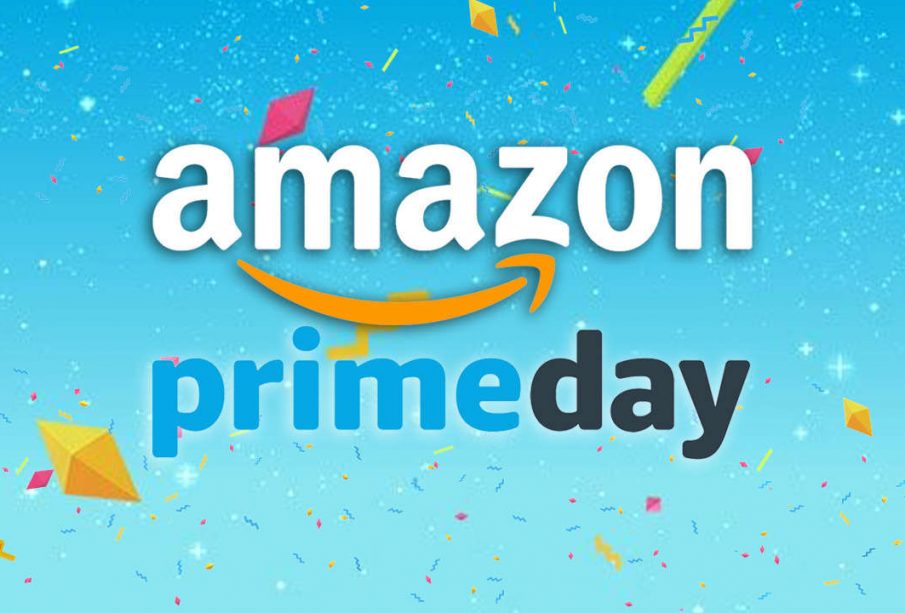Amazon’s Prime Day Is Shaping up to Be Its Most Challenging One Yet

KEY POINTS
- Amazon delayed its annual Prime Day shopping event to Oct. 13-14 as an outcome of the pandemic.
- Online shopping remains strong heading into the vacations and experts anticipate Prime Day sales will top last year’s event.
- But a mid-October Prime Day could still result in some snafus, given that third-party sellers deal with limits on the number of goods they can ship into Amazon’s warehouses.
In the 6 years since Amazon held its first Prime Day, the marquee shopping occasion has constantly been held in mid-July as an attempt to drum up sales during the slow summer season.
But on Tuesday, when the two-day event begins, Amazon will see whether it can successfully press consumers to search out deals more than a month prior to the vacation shopping season traditionally starts.
The business pushed back its annual discount shopping event from mid-July to Oct. 13-14 after the coronavirus pandemic created unprecedented pressure on its fulfillment and logistics operations. Dealing with a deluge of online orders, Amazon rapidly began to run out of stock of products on its site and could not satisfy its vaunted Prime two-day delivery window.
Over the ensuing months, Amazon worked to return conditions in its warehouses to regular by prioritizing shipments of vital products. It caused 175,000 brand-new storage facilities and delivery employees to assist take on the load. Amazon kept more than 70% of the workers it included, signifying that online orders continue to flood in long after the panic buying lessened.
The business has been busy expanding its storage facility footprint, with the goal of growing its international network square video by 50% in 2020, up from a 15% increase in 2019. Amazon stated it’s on track to open 33 new fulfillment centers in the U.S. this year. It has likewise added a slew of new shipment stations, which permit Amazon to get closer to consumers and accelerate deliveries.
Amazon opened 158 last-mile shipment stations between March and October, more than any other type of center, according to MWPVL International, a supply chain and logistics consulting company. The last-mile centers are likely to give Amazon an upper hand versus retail rivals throughout the vacation shopping season, particularly when consumers are trying to find Christmas gifts at the l lth hour.
Amazon will need the additional area in order to weather the back-to-back rush of Prime Day and the holiday shopping season, along with to prevent the hold-ups and out-of-stock notifications that rankled the business back in March.
With Prime Day taking place in October, Amazon’s “peak season” will last longer than ever before. Peak season usually refers to the week before Black Friday through Christmas, during which warehouses are completely staffed and employees are required to work overtime.
For numerous storage facility staff members, working during peak season is rather of a badge of bravery, due to the long hours and apparently limitless stream of packages draining of storage facilities. Some employees have even produced commemorative Tee shirts to mark the period, with slogans such as “You can see your family in January” and “Instapot season,” most likely in referral to the truth that the Instantaneous Pot pressure cooker is frequently a top-selling item on Prime Day and throughout the holidays.
Prime Day, which started in 2015, has grown to turn into one of the business’s essential retail and marketing occasions. It secures new Prime customers, enables Amazon to even more promote its product or services, and offers a sales increase, usually in the middle of the year.
This year’s Prime Day is expected to be just as rewarding for the company. Amazon does not share Prime Day sales volume, however, JPMorgan forecast this year’s occasion might generate earnings of $7.5 billion, up 42% from its 2019 quotes. eMarketer approximated Prime Day sales might strike near to $10 billion.
For shoppers, Prime Day may overshadow this year’s Black Friday and Cyber Monday, with 67% of U.S. shoppers preparing to make a purchase throughout the occasion this year, according to a RetailMeNot study of over 1,000 customers.
Amazon’s choice to hold Prime Day so near the vacations, or perhaps at all this year given the coronavirus-related restraints, is a testimony to its importance to the company, said Bernie Thompson, a 10-year seller on Amazon and founder of electronics business Plugable Technologies.
“Amazon wouldn’t desire to simply forgo it for a year,” Thompson said. “It’s too crucial to Amazon’s development cycle and how they win customers.”

Bracing for chaos
With Prime Day set to start quickly, it’s not just warehouse workers who are bracing for an onslaught of online orders.
The millions of third-party sellers that comprise Amazon’s market will also be running discount rates on their products, which run the gamut from utilized electronic devices and custom-made T-shirts to pet supplies. The group is of growing value to Amazon, accounting for 58% of the company’s total product offered.
In spite of their crucial function in Prime Day, multiple sellers informed CNBC that they felt they were unprepared for this year’s discount occasion. Typically Amazon sends out a lot of signals to third-party sellers leading up to Prime Day, advising them of cutoff dates for marketing, discount rate submissions, and brand-new shipments. But this year, third-party sellers learned when Prime Day would be held at the same time as the public.
“How can you consider your sellers’ partners with you if you do not provide time to prepare?” stated Jason Boyce, a previous Amazon seller who is now an expert to third-party merchants. “It’s disappointing.”
With little time to prepare, some merchants are just running a couple of Prime Day discount rates and plan to provide deals throughout the vacation shopping season. Boyce and Thompson said sellers are also approaching Prime Day very carefully due to just recently announced inventory limits in Amazon’s warehouses.
In July, to save area, Amazon stated it would begin restricting the number of products third-party sellers can send into its warehouses. All product categories are affected by the change, with amounts differing on a product-by-product basis.
Amazon has been working closely with third-party sellers ahead of Prime Day and is ensuring it has adequate area for sellers to save their products in its storage facilities, stated Jamil Ghani, Amazon’s vice president of Prime, in an interview with CNBC in September. ” We’ve been making modifications to our logistics and supply chain to adapt to an ever-evolving scenario,” Ghani added.
The quantity restricts just effect third-party sellers who utilize Fulfillment by Amazon, or FBA, which is the business’s program that lets sellers ship their products to an Amazon warehouse, and after that Amazon ships the product to consumers for a cut of each sale. Sellers likewise keep goods in their own storage facilities and handle satisfaction, however, the bulk of Amazon’s leading third-party merchants in the U.S. use FBA for their orders.
Even with the new limits, the majority of products will have an adequate area available for over three months of sales, which is more than numerous sellers need, considered that the majority of sellers bring about 1.5 months of stock in Amazon’s facilities, the business stated. If sellers run out of stock, they can send out in brand-new inventory whenever Amazon added.
Amazon said it has also decreased its own retail item ordering to accommodate more items from third-party sellers in FBA warehouses.
Still, Thompson stated the limits suggest third-party sellers will have to have their stock “perfectly timed” to avoid running of stock, especially on “top-tier” Prime Day promotions, like Offer of the Day. Deal of the Day promotions, which are included prominently on Amazon’s site during Prime Day, can move up to a month’s worth of inventory in one day, Thompson stated.
“So there’s a month of items that are sold simultaneously in one day, which is fantastic, but you know, you’re the type of down to about a month of other stock that is readily available to sell all a few days ago,” Thompson said.
“It can be done, but we have never before had these types of stock limitations.”






